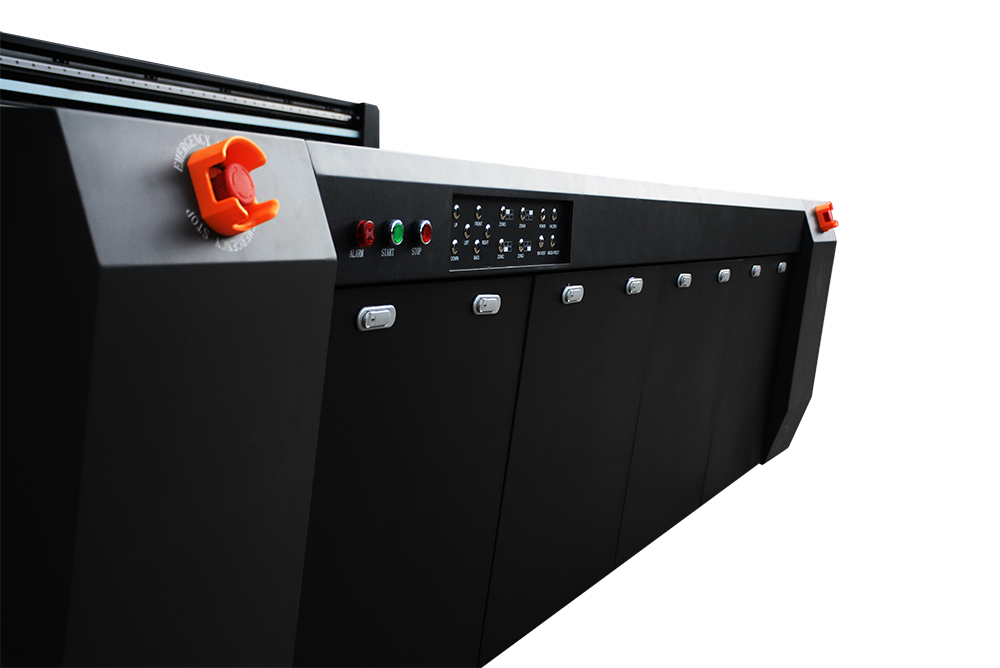How Does a UV Flatbed Printer Achieve High-Resolution Prints?
How Does a UV Flatbed Printer Achieve High-Resolution Prints?
In the realm of digital printing, achieving high-resolution prints is a paramount objective for businesses seeking to produce visually stunning and detailed outputs. UV flatbed printers have emerged as a formidable technology in this pursuit, offering unparalleled print quality across a wide range of materials. This article delves into the intricacies of how UV flatbed printers achieve such high-resolution prints, exploring their unique features, printing processes, and the technological advancements that facilitate this capability.

Understanding UV Flatbed Printers
UV flatbed printers are a type of digital printing machinery that utilize ultraviolet (UV) light to cure or dry ink instantly after it is deposited onto the substrate. This technology allows for printing on various flat surfaces, including but not limited to glass, plastic, wood, metal, and even flexible materials like leather and fabric. The key advantage of UV flatbed printers lies in their ability to produce prints with exceptional resolution, vibrant colors, and durable finishes.
The Role of UV Inks
One of the fundamental factors enabling high-resolution prints is the use of specialized UV inks. These inks are formulated to be highly reactive to UV light, undergoing a chemical reaction when exposed to it, which solidifies the ink instantly. This rapid curing process ensures that the ink does not bleed or smear, allowing for precise dot placement and sharper image edges. UV inks also exhibit excellent adhesion properties, enabling them to bond securely with a wide array of substrates, further enhancing print quality.
High-Precision Print Heads
UV flatbed printers are equipped with advanced print heads that play a pivotal role in achieving high-resolution prints. These print heads contain numerous microscopic nozzles that can dispense ink droplets with incredible accuracy. The smaller the droplets, the higher the resolution the printer can achieve. Modern UV flatbed printers often employ piezoelectric technology in their print heads, which allows for precise control over droplet size and deposition, resulting in smoother gradients, sharper lines, and overall better image clarity.
Advanced Imaging and Color Management
To attain high-resolution prints, UV flatbed printers incorporate sophisticated imaging and color management systems. These systems ensure accurate color reproduction by utilizing advanced color profiling techniques. ICC (International Color Consortium) profiles are created for specific substrates, allowing the printer to adjust ink output to match the desired color accurately. Additionally, high-resolution imaging capabilities enable the printer to interpret and render complex image data with minimal loss of detail, contributing to the overall sharpness and clarity of the print.
Precision Movement and Positioning
UV flatbed printers are designed with precision movement and positioning mechanisms to facilitate high-resolution printing. The printer’s bed, where the substrate is placed, moves in a controlled manner under the print heads, ensuring that each pass of the heads deposits ink with consistent spacing and alignment. This precise movement, often aided by servo motors and high-resolution encoders, minimizes any potential misalignment or banding issues, resulting in seamless, high-quality prints.
Layering and Build-Up Techniques
Achieving high-resolution prints also involves strategic layering and build-up techniques. UV flatbed printers can deposit ink in multiple layers, gradually building up color intensity and detail. This layered approach allows for a broader color gamut, smoother transitions between colors, and enhanced texture effects. By carefully controlling the ink deposition in each layer, UV flatbed printers can achieve remarkable depth and realism in the prints.
Software and Printing Parameters
Sophisticated software drives the high-resolution printing capabilities of UV flatbed printers. The printer’s software allows users to fine-tune various printing parameters, such as ink flow rate, print speed, and UV intensity, to optimize print quality for specific applications. These adjustments ensure that the ink is deposited uniformly and cured effectively, resulting in prints with exceptional detail and durability.
Innovations in UV Flatbed Printing
Continuous advancements in UV flatbed printing technology further enhance its ability to produce high-resolution prints. For instance, the integration of variable dot technology enables printers to adjust the size of ink droplets in real-time, optimizing ink usage and print quality based on the specific requirements of the image. Similarly, advancements in UV LED curing technology have led to faster curing times and reduced energy consumption, while maintaining or even improving print resolution.
Applications and Impact
The ability of UV flatbed printers to achieve high-resolution prints has revolutionized various industries. In the signage and graphics industry, UV flatbed printers enable the production of vibrant, eye-catching displays and wayfinding elements. The packaging industry benefits from the ability to print high-resolution designs directly onto various packaging materials, enhancing product appeal and brand recognition. Furthermore, UV flatbed printing technology is increasingly being adopted in the decorative and fine art sectors, where it allows artists and designers to create unique, high-quality pieces with intricate details and vivid colors.
Conclusion
In conclusion, UV flatbed printers achieve high-resolution prints through a combination of specialized UV inks, high-precision print heads, advanced imaging and color management systems, precise movement and positioning mechanisms, strategic layering techniques, sophisticated software, and ongoing technological innovations. These factors collectively enable UV flatbed printers to produce prints with exceptional detail, vibrant colors, and durable finishes across a wide range of materials. As technology continues to advance, the capabilities of UV flatbed printers will further evolve, pushing the boundaries of what is achievable in digital printing and empowering businesses and artists to create even more impactful and visually stunning works.
